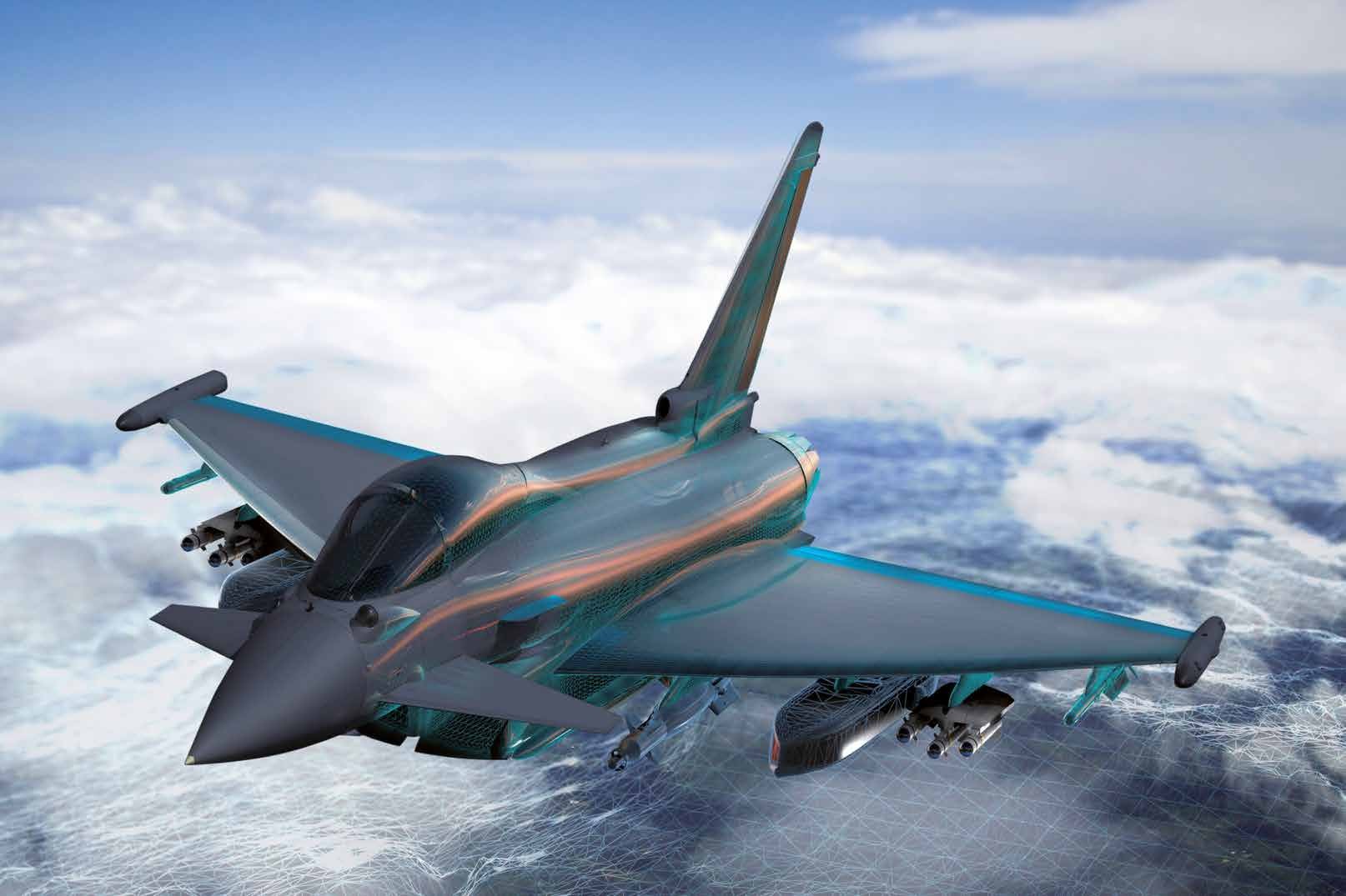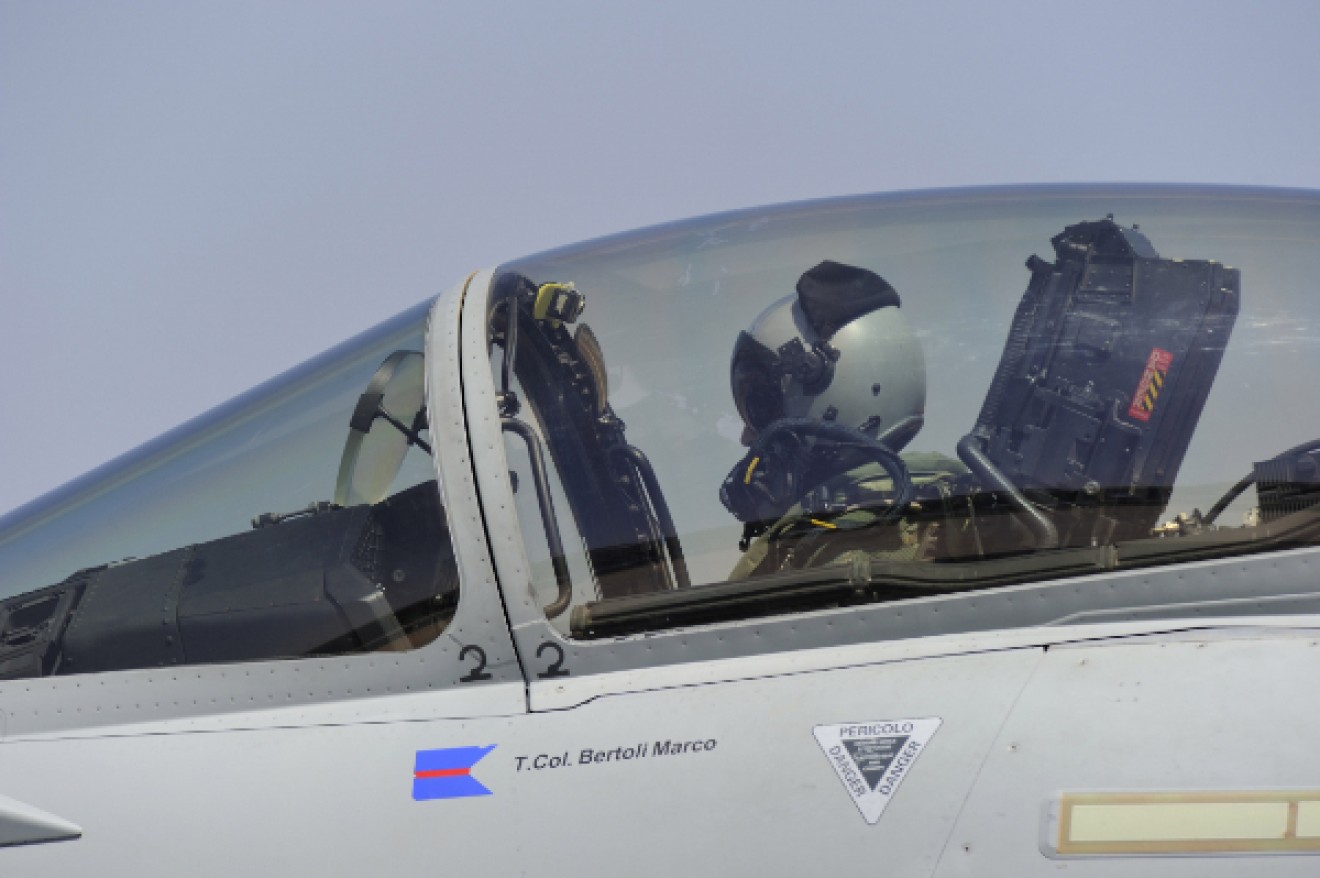We’re living through a time of rapid technological developments that are shaping the thinking about the future of air power. Recent conflicts have seen a shift from symmetric to asymmetric warfare, with fast moving elusive targets.
Threats that demand a high degree of flexibility and precision to avoid or minimise collateral damage. At the same time, from a technology perspective, we are seeing the dawn of new weapons systems, including new drone-based and advanced land-basedair defence systems.
We also see an emerging threat from advanced passive radar systems, which will pose an increasing danger for current platforms, with low observable characteristics, reliant on a reduced radar signature.
Another important factor is cyber technology. Around 80 percent of the capabilities of future aircraft will be software-based and ensuring the whole infrastructure and system is robust and resilient against cyber-attacks will be crucial.
All of these developments are driving Europe’s future air warfare requirements. What’s already clear is that new approaches and solutions will be required. In recent months, a direction of travel has started to emerge in Europe about the capability need for future combat air systems.
However, the challenges of the future battlespace are already being inserted into the enhancement of the Eurofighter platform. That’s why an evolving Eurofighter is set to be the logical bridge to any future combat air system. Clearly an enhanced Eurofighter will be part of the DNA of the future fighter — working hand in hand with other systems in a future battlespace, whether those are manned or unmanned.
WINNING FUTURE BATTLES
So you can ask what does the future battlespace look like and what factors are key for success? Is it capability? Is it supercruise? Is it agility in the dog fight? Is it stealth? Is it sensor fusion? Well, my answer is that it’s none of those factors.
Or rather, it’s the combination of those capabilities to be able to attain a certain freedom of movement in a contested airspace to be able to fulfil your mission, be it kinetic or non-kinetic. And for that, you need different capabilities which depend on the type of mission.
So how well is Eurofighter currently able to meet these challenges and what are the pressing needs to ensure that it remains at the heart of European air defence in the decades ahead? Well, I’m convinced that for current scenarios, Eurofighter is a very good choice for a military decision maker.
It’s proven daily in international operations. But we are also looking at what the best technologies to ensure Eurofighter meets the operational demands of the future battlespace too. To simplify this complex question we should look at six key enablers to maintain combat edge in the future battlespace.
SIX KEY ENABLERS FOR THE FUTURE BATTLESPACE

1 KNOWLEDGE IS POWER
Interoperability and connectivity will be key requirements of the future battlespace. Decision speed depends on it. Coalition forces will have to be able to talk the same language, to exchange information, data and targeting solutions to a far higher degree – and speed – than they do today. We currently have common NATO standards but demands for data will intensify in the future.
The Eurofighter of the future will see new data links introduced and existing ones enhanced. Our view is that in the near future, the player who doesn’t have the required degree of connectivity will not be able to take part in coalition operations because it would have a negative effect on efficiency and safety of your own troops and forces.
Everybody on the network — the soldier on the ground, the ship, the pilot, the weapons system, the weapon itself — will all be connected. This will contribute to the situational awareness of the decision maker. The dynamics around the exchange of information and intelligence will drastically increase.
2 DIFFERENT MISSIONS, DIFFERENT CAPABILITIES
A one-size-fits-all solution doesn’t exist. If you want stealth, you can’t have payload. If you want payload, you can’t have stealth. If you want survivability, you need two engines. If you want vertical take-off capability you can only have one engine, which can have an impact on the survivability of your jet. Eurofighter is built on a philosophy that a broad set of equalised capabilities is future-proof in a future battlespace because there are a whole set of capabilities needed and not just a single one.
3 SENSOR SHOOTER OPS VS KILL WEB
Current combat scenarios are ‘Sensor Shooter’ led, which means the platform carrying the weapon uses its own sensors to create a targeting solution, then employs its weapon against it.
However, the new technological developments that are coming on stream will make it viable for the platform to rely on a targeting solution from another sensor. It’s a concept known variously as ‘Kill Web’ or ‘Combat Cloud’. Essentially, it means you can use target data from another asset in the network, for example, a ship, and then employ your weapon on it.
This shift, from the traditional Sensor Shooter scenario, to a future battlespace is an evolutionary change — it’s a continuous transition and we’re living through it. A platform like Eurofighter will evolve with it and through it and will therefore play a crucial role in future. So we need to get used to the concept of having a ship as your wing man. The future battlespace will inevitably be a highly networked environment and network enabled weapons will be a key requirement. We are already seeing the introduction of these — like SPEAR3 — onto Eurofighter. You can employ them from the most suitable location or you can get the best data available to your weapon, without necessarily using your own sensors.
4 SURVIVABILITY
When you talk about survivability people often jump to considering the quality of the hardware on the jet and the fidelity of the sensors, the way it displays information and so on. But that’s just one part of the equation. Just as important is the mission data — the data that you insert into the jet so that it’s able to ‘know’ what’s going on in the future battlespace.
It has to be able to gather data, save it and make it downloadable in the fastest possible time. Then it has to be analysed by specialists who can share it with your forces. With mission data we’re talking about several factors: the software, the people who are trained to analyse it, and your experience as a force.
With Eurofighter, forces in operations have the ability to re-programme the software in the jet as quickly as possible. That’s because Typhoon has no black boxes.
And this is really important. If you don’t have good mission data, your survivability decreases and therefore your efficiency and survivability is at risk.
5 SENSOR FUSION
Eurofighter Typhoon already has a very high level of sensor fusion capabilities but, as sensors improve, the amount of data will increase. In order to remain future-proofed, the capacity and the processing speed of our equipment will increase as part of our future evolution. The bottom line is sensor fusion has to serve the pilot so he can take the right decision and can focus on his mission, and other tasks are taken from him and carried out by smart systems, for example, a sensor manager.
6 PAYLOAD CHOICE
Flexibility — in terms of the weapons you have at your disposal —will be crucial in terms of effectiveness and survivability. The more weapons you can choose from, the more flexible you are in using your weapon platform. Eurofighter already has a broad weapons suite to call on but that’s expanding with the arrival of Brimstone, Marte ER and Spear3, to name just a few. On top of this Eurofighter has the ability to carry both American weapons and European weapons, which all adds to its flexibility.
